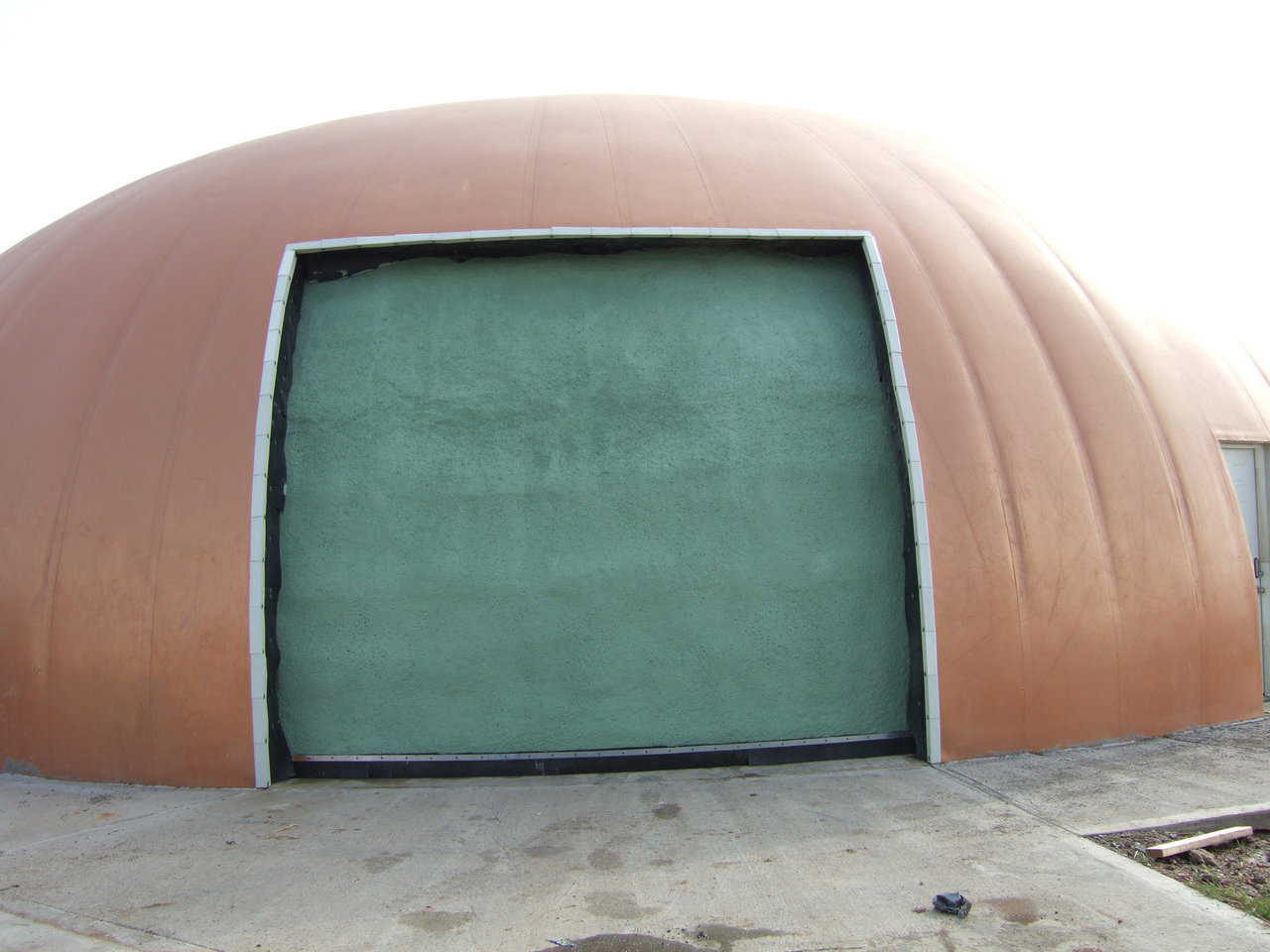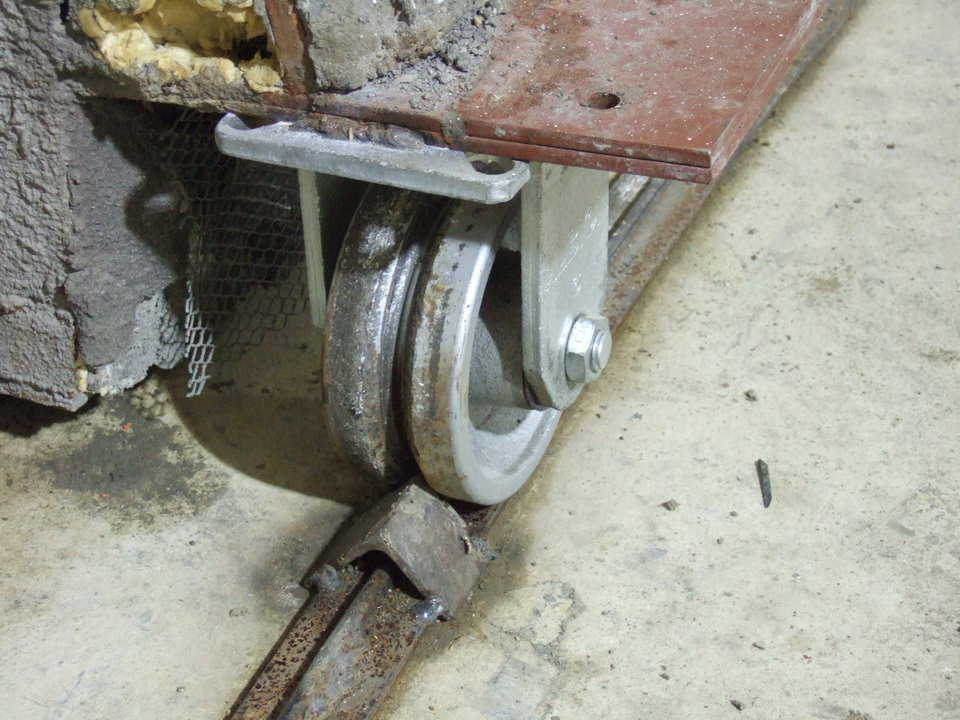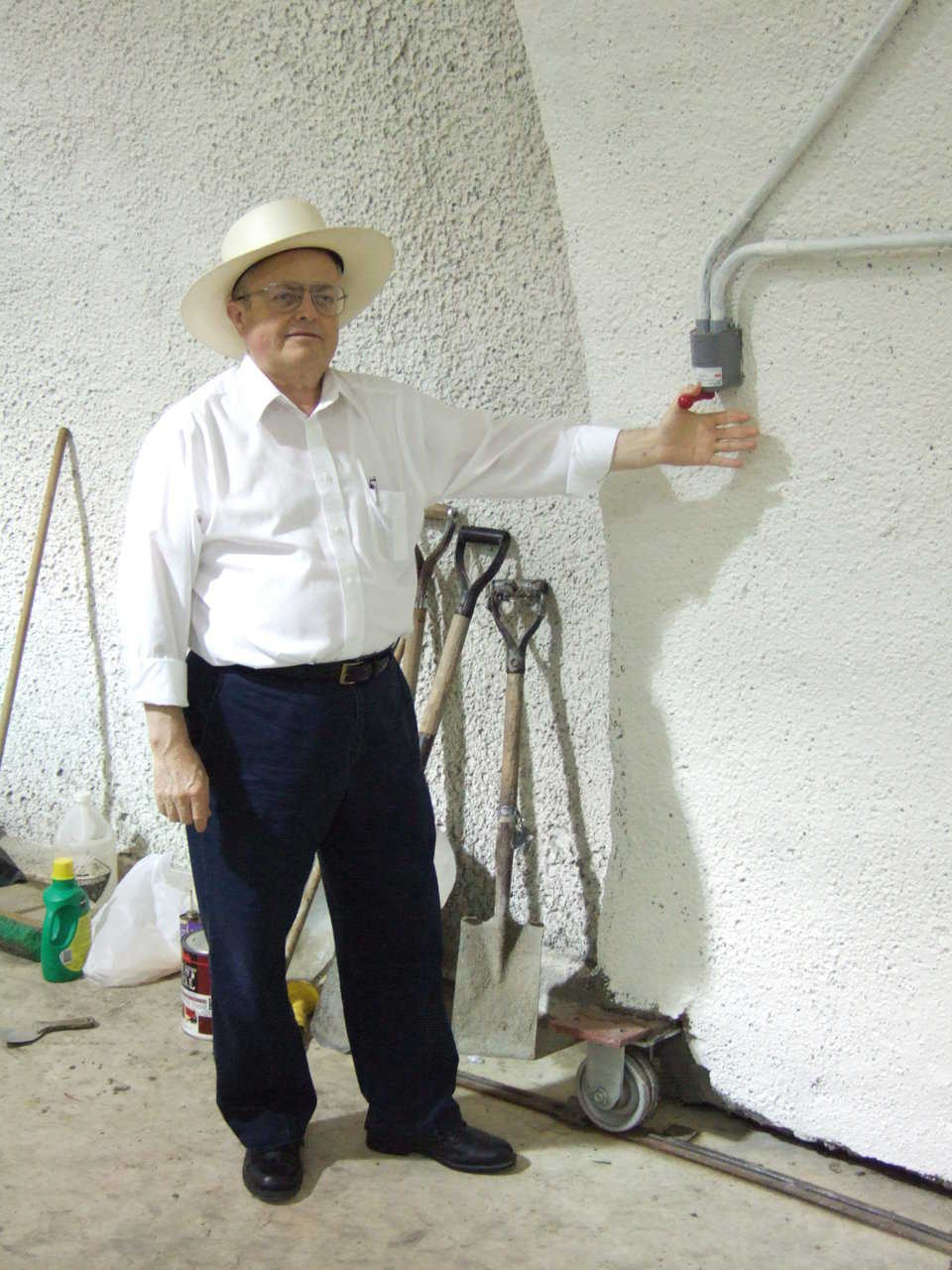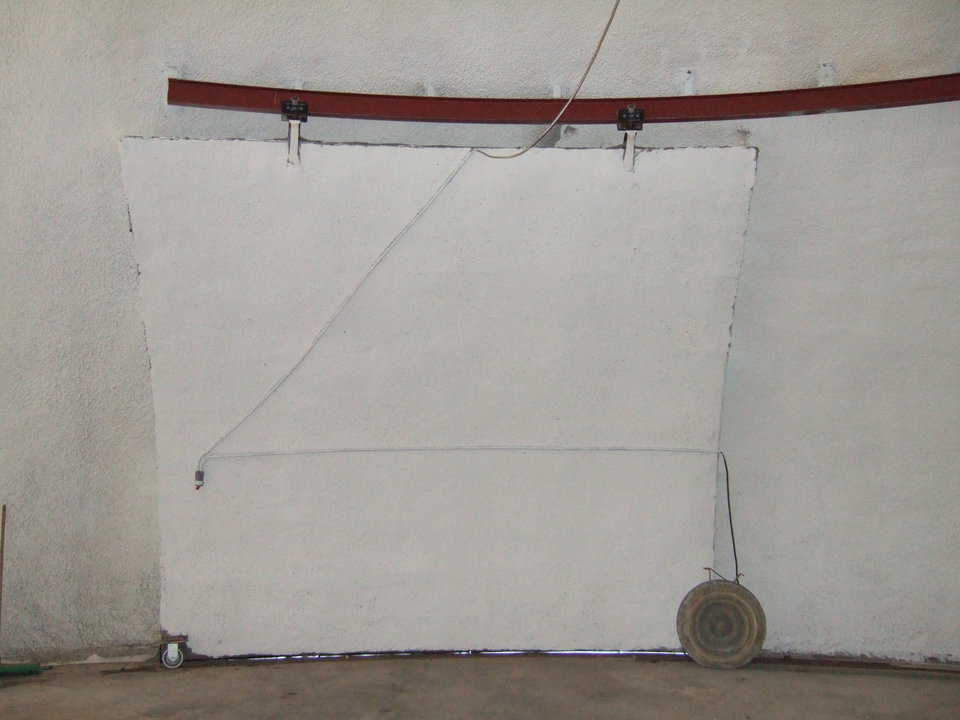
M.C.L.A.D. — The Monolithic Door is best described by its official name: the Monolithic Contoured Laterally Moveable Access Door. Constructed as a one-piece, three-dimensional, curved panel, the Monolithic Door can move laterally on the inside or the outside of a Monolithic Dome.
The MCLAD: Monolithic Contoured Laterally Moveable Access Door
Surprise, Surprise!
“This is really dynamite! I’m amazed at how it is expanding. When I first started, I never even imagined the possibilities we’re now coming up with.” The speaker is a delighted David B. South, president of Monolithic and the “This” and “it” David is talking about is the Monolithic Door.
Invented by David, the Monolithic Door is best described by its official name: the Monolithic Contoured Laterally Moveable Access Door. It is and does everything that its name implies. Constructed as a one-piece, three-dimensional, curved panel, the Monolithic Door can move laterally on the inside or the outside of a Monolithic Dome.
A Problem Gets Solved
MCLAD began as a solution to one specific problem. “In about 1980, I became more and more aware of the need for disaster-proof airplane hangars,” David said. “I would turn on the TV and hear yet another report of a tornado going through a certain area and tearing up a hangar or two. So I knew that the need and the market for an airplane hangar that could survive natural disasters was there.”
At that point, Monolithic was already building virtually indestructible domes, so Monolithic had the structure – but not without a problem. “The weakest part of any hangar is its door,” David explained. “I knew that putting a conventional hangar door – generally a thin, sheet metal, flat panel – on a concrete dome would not be a solution. The door had to be as invincible as the dome.”
For another two decades, David sporadically wrestled with this problem. Then, in 2001, people from the Dallas Executive Airport (formerly Redbird Airport) asked David for a price quote on an airplane hangar. “They asked if I could make a model so they could see what a dome-hangar would look like,” David said. "So I went over to Home Depot and bought a small skylight that could serve as a model of a dome.
“I got my Dremel tool and cut an opening for the hangar door, and when I did, that piece fell on the floor. As I picked it up the light bulb turned on! Walla! I had been trying to put a flat door on a round building. Let’s put a round door on the round building.”
A Good Idea Gets Better
Inventing a door whose roundness and strength matched the roundness and strength of the dome it was on did solve the hangar problem. By 2002 Monolithic had plans for hangars capable of sheltering the smallest to the largest of aircraft, including the Airbus A380. “We designed a Monolithic Dome Hangar for the Airbus A380 – which, by the way, seats 555 and costs $250 million per plane – that has a diameter of 360 feet and a height of 150 feet,” David said.
But what was invented as a hangar door did not remain just a door for hangars. “As we continued to work with this idea, more uses and possibilities began occurring,” David said. “Because this door can be shaped and sized to fit a specific need, it will work well for shops, factories, garages, storage facilities – even huge stadiums and amphitheaters.”
To demonstrate the door’s practicality, Monolithic built a new shop and equipped it with a Monolithic Door. This copper colored dome-shop is an oblate ellipse, 60 feet in diameter and 20 feet high. Its 2-ton, concrete door is 14 feet wide and 12 feet high, hangs from a curved, overhead track inside the dome and is additionally supported by rollers installed along its bottom. The door opens and closes by rotating to the inside of the dome.
“To avoid injuring someone with this 2-ton door, I had the open/close switch mounted on the door so that a person must walk with the door and keep a finger on the switch to keep the door moving,” David explained.
But the Monolithic Door can be equipped with a remote control. It can also have a smaller door built into it that allows people or small equipment to pass through without opening the much larger Monolithic Door.
And Even Better
Instead of inside, the track from which the Monolithic Door hangs can be installed on the dome’s outside. “That’s another advantage,” David pointed out. "That makes it possible to construct a huge Monolithic Dome or Crenosphere as a stadium, for example, and equipping it with a Monolithic Door that, when opened, turns the facility into a huge amphitheater.
“That will only work with a door that rotates over the dome’s exterior,” he continued. “A door moving over the inside probably would endanger lighting and audio equipment attached to the wall and ceiling.”
Other Applications
The military could easily find many uses for a Monolithic Dome with a Monolithic Door. “We can make very heavy domes with very heavy doors,” David stated. “The military could use them for everything from barracks and mess halls to equipment and munitions storage. And they wouldn’t have to worry about rifle fire or even rocket propelled grenades.”
Such a dome could benefit our space program too. According to media reports, officials at Cape Canaveral and NASA’s Kennedy Space Center worry about our space shuttles, now housed in a building that could not withstand a Category 5 hurricane. “They have reason to worry,” David said. “They are on Florida’s eastern coast, an area significantly affected by Hurricane Irene in 1999 and Frances and Jeanne in 2004. Statistically, that area gets hit or brushed by a hurricane every 4.19 years. Those shuttles would be much safer in a dome.”
A Patent
On September 12, 2003, David filed for a US patent for the MCLAD, Monolithic Contoured Laterally Moveable Access Door. “When I first talked to our patent attorney,” he recalled, “I told him I wanted a patent on a hangar door. He just kind of took a big breath and said, ‘Dave, I don’t think there’s any way you could do that.’ So I sent him some pictures. Soon he called back and said, ‘I just flew down to Washington, D.C. to check things out. I’m almost certain you will get that patent.’”
US law dictates that to be patentable, an invention must meet certain criteria. Put very simply and briefly, the invention must be new and unknown to the public, must be useful, and must be novel or significantly different from prior products. “We’re delighted that the Monolithic Door meets that criteria,” David concluded. “The Monolithic Dome is a great structure made even better and more versatile by the Monolithic Door.”
Patent # 7,013,607
Note: This article was updated in April 2008.

Door’s track — Instead of inside, the track from which the Monolithic Door hangs can be installed on the dome’s outside. “That’s another advantage,” David pointed out. "That makes it possible to construct a huge Monolithic Dome or Crenosphere as a stadium, for example, and equipping it with a Monolithic Door that, when opened, turns the facility into a huge amphitheater.

Automated — “To avoid injuring someone with this 2-ton door, I had the open/close switch mounted on the door so that a person must walk with the door and keep a finger on the switch to keep the door moving,” David explained.

Perfect fit — What was invented as a hangar door did not remain just a door for hangars. “As we continued to work with this idea, more uses and possibilities began occurring,” David said. “Because this door can be shaped and sized to fit a specific need, it will work well for shops, factories, garages, storage facilities — even huge stadiums and amphitheaters.”